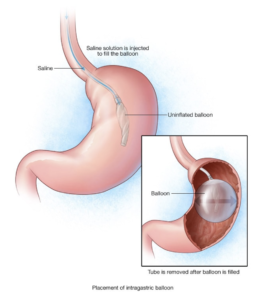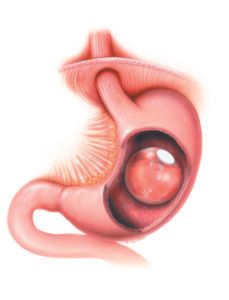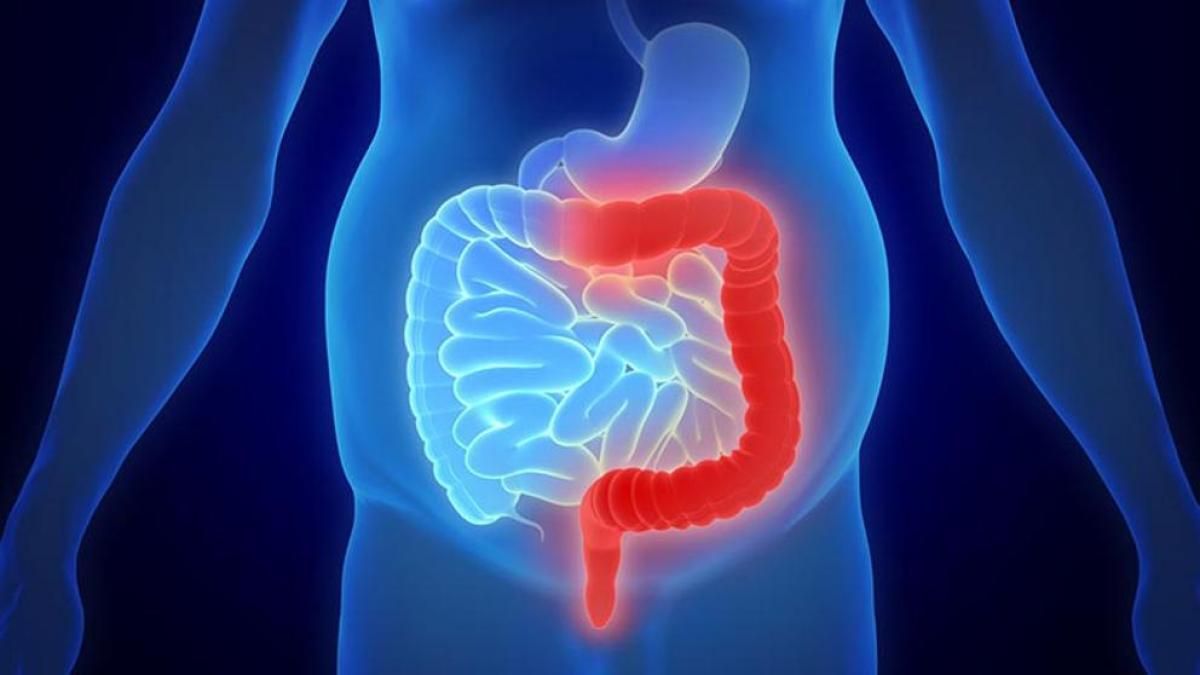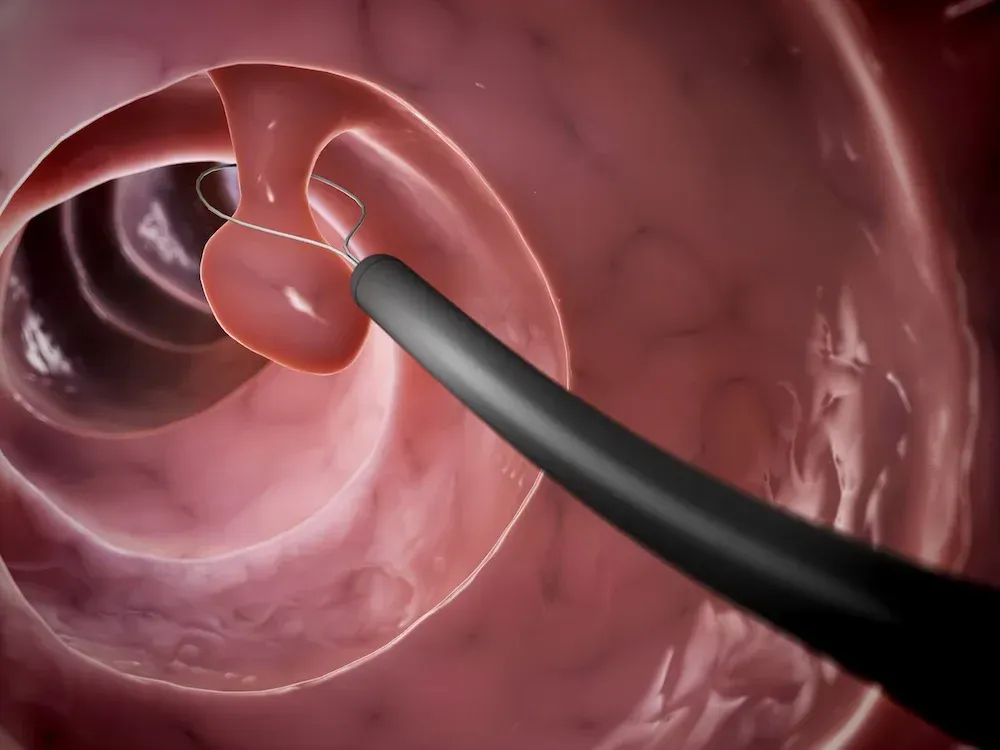What is an Intragastric Balloon?

Intragastric balloon placement is a procedure for weight-loss that involves placing a saline-filled silicone balloon in your stomach. This helps you lose weight by limiting how much you can eat and making you feel fuller faster.
The intragastric balloon procedure may be an option if you have concerns about your weight, and diet and exercise haven’t worked for you.
Like other weight-loss procedures, an intragastric balloon requires commitment to a healthier lifestyle. You need to make permanent healthy changes to your diet and get regular exercise to help ensure the long-term success of the procedure.
Why it’s done
The placement of an intragastric balloon helps you lose weight. Weight loss can lower your risk of potentially serious weight-related health problems, such as:
- Gastroesophageal reflux disease (GERD)
- Heart disease or stroke
- High blood pressure
- Obstructive sleep apnea
- Nonalcoholic fatty liver disease (NAFLD) or nonalcoholic steatohepatitis (NASH)
- Type 2 diabetes
Intragastric balloon placement and other weight-loss procedures or surgeries are typically done only after you’ve tried to lose weight by improving your diet and exercise habits.
Who it’s for
An intragastric balloon may be an option for you if:
- Your body mass index (BMI) is between 30 and 40
- You’re willing to commit to healthy lifestyle changes, get regular medical follow-up and participate in behavioral therapy
- You have not had any previous stomach or esophageal surgery
Intragastric balloons aren’t the right choice for everyone who is overweight. A screening process will help your doctor see if the procedure might be beneficial for you.
At this time, the cost for placing and removing the intragastric balloon may not be covered by health insurance, and would therefore be an out-of-pocket expense.
Risks
Pain and nausea affect about one-third of people soon after insertion of an intragastric balloon. However, these symptoms usually only last for a few days after balloon placement. These symptoms can usually be managed with oral medications at home.
Although rare, serious side effects may occur after intragastric balloon placement. Call your doctor immediately if nausea, vomiting and abdominal pain occur any time after surgery.
A potential risk includes balloon deflation. If the balloon deflates, there’s also a risk that it could move through your digestive system. This can cause a blockage that may require an additional procedure or surgery to remove the device.
Other possible risks include overinflation, acute pancreatitis, ulcers or a hole (perforation) in the stomach wall, which might require surgery to fix.
How To Prepare
If you’re going to have an intragastric balloon placed in your stomach, your health care team will give you specific instructions on how to prepare for your procedure. You may need to have various lab tests and exams before your procedure.
You may need to restrict what you eat and drink, as well as which medications you take, in the time leading up to the procedure. You may also be required to start a physical activity program.
What you can expect
During the procedure
The intragastric balloon procedure is done in the endoscopy unit as an outpatient procedure. You’ll be sedated for the procedure.
During the procedure, the gastroenterologist advances a thin tube (catheter) loaded with the intragastric balloon down your throat into your stomach. Next, the doctor advances an endoscope — a flexible tube with a camera attached — down your throat into your stomach. The camera allows your doctor to see the balloon as he or she fills it with saline.
The procedure takes about a half-hour. You can normally go home one to two hours after the procedure is finished.
After the procedure
You can have small amounts of clear liquids starting about six hours after the procedure. The liquid diet generally continues until the start of the second week, when you can start eating soft foods. You’ll probably be able to start eating regular food around three weeks after the insertion of the intragastric balloon.
Intragastric balloons are left in place for up to 6 months and are then removed using an endoscope. At that time, a new balloon may be placed, or not, depending on the plan determined by you and your doctor.
You’ll also meet with members of your medical team, such as your nutritionist and psychologist, frequently after your procedure.
Results
An intragastric balloon can make you feel more full faster than you normally would when eating, which often means you’ll eat less. One reason why may be that the intragastric balloon slows down the time it takes to empty the stomach. Another reason may be that the balloon seems to change levels of hormones that control appetite.
The amount of weight you lose also depends on how much you can change your lifestyle habits including diet and exercise.
Based on a summary of currently available treatments, loss of about 7% to 15% of body weight is typical during the six months after intragastric balloon placement. Total excess weight loss ranges from 30% to 47%.
As with other procedures and surgeries that lead to significant weight loss, the intragastric balloon may help improve or resolve conditions often related to being overweight, including:
- Gastroesophageal reflux disease
- Heart disease
- High blood pressure
- Obstructive sleep apnea
- Osteoarthritis (joint pain)
- Type 2 diabetes
- High cholesterol
- Nonalcoholic fatty liver disease (NAFLD) or nonalcoholic steatohepatitis (NASH)
When weight-loss procedures don’t work
It’s possible to not lose significant weight or to regain weight after any type of weight-loss procedure or surgery, even if the procedure itself works correctly. This weight gain can happen if you don’t follow the recommended lifestyle changes. Permanent healthy changes in your diet, along with regular physical activity and exercise, are necessary to avoid regaining weight.
The post What is an Intragastric Balloon? appeared first on Gastro SB.










